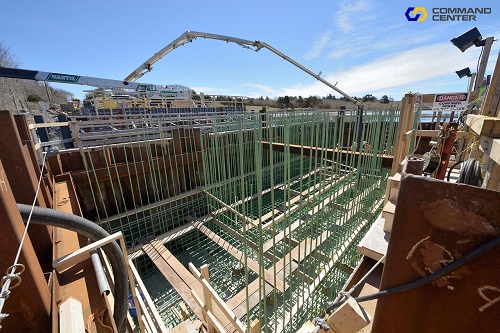 Wednesday, October 2, 2024
Wednesday, October 2, 2024  Wednesday, October 2, 2024
Wednesday, October 2, 2024 
Minimizing the risk of temperature-related damage is a fundamental part of every mass placement project.
Maintaining appropriate temperatures and temperature ranges within mass concrete is a key to maintaining its durability and longevity. The risk of temperature-related concrete damage increases if the temperature of concrete gets too high or the temperature differential between the hottest interior point and the surface and/or edge gets too large. Therefore, many agencies include specifications that require early-age concrete temperature not exceed some maximum internal temperature limit and that temperature differentials in early-age concrete stay below some maximum limit.
The American Concrete Institute (ACI) offers a simple definition of mass concrete. According to ACI 116R, mass concrete is “any volume of concrete with dimensions large enough to require that measures be taken to cope with generation of heat from hydration of the cement and attendant volume change, to minimize cracking.”
Specifications vary among different agencies; mass concrete is defined by most specifications based on the element’s dimensions. Structural concrete with a least dimension greater than 3 feet (0.9 m) is a commonly used guideline for determining mass concrete. The dimension for classifying mass concrete ranges from 1.5 feet to 6.5 feet.
Keep in mind that this specification refers to dimension only. The content of the cementitious mixture used in the mass concrete will also have an impact on the concrete temperatures within those placements.
Keep reading and learn more about mass concrete temperature monitoring